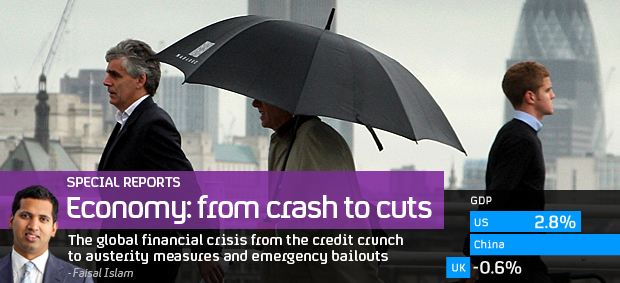‘Squeezed middle’ worse off until 2020
Low to middle income earners will not see their disposable income approach pre-recession levels until 2020 at best, a report from a leading think tank warns.

The Squeezed Britain study which was compiled by the Resolution Foundation said households in this bracket, which typically bring in just over £20,000 in take-home pay a year, are also facing a 22-year wait to save up enough cash to buy their first home.
The report exposed the “daily struggle” of these families, who account for 5.8m households and nearly one third of working age homes in Britain.
The low to middle income group studied includes, for example, couples without children living on a gross annual household income of between £12,000 and £29,000 and couples with two children on between £17,000 and £41,000.
Deep cuts to tax credits due this April will come as a shock on top of the continued wage squeeze. Matthew Whittaker
The study suggested that incomes for this group will decline before flattening out around 2016-17. If this is followed by strong growth, it will take until 2020 for low to middle income households to return to the levels of disposable income they had before the recession, but if growth is stagnant, real incomes could be 8 per cent lower than in 2007.
The findings appear to bear out a warning from the Institute for Fiscal Studies in 2010 which warned that the chancellor’s spending review cuts would hit poorer families hardest.
Private rentals tripled
Under both scenarios, the gap between low and middle income earners and those on higher incomes will widen, the report warned. The study also charted the “disappearing” property ladder for these households, who typically took four years to save for a first-time buyer deposit in 1991.
By 2001 this group took eight years to raise a deposit, and by 2011 this wait had more than doubled to 22 years, with those aged under 35 facing being stuck in rented accommodation, perhaps for the rest of their lives.
Researchers put the sharp rise down to house price rises as well as bigger deposits as a percentage of house prices needing to be raised, while wages remain flat.
They based their calculations on a deposit of around 20 per cent currently needed to purchase a first-time buyer house, typically costing just over £124,500.
Most are working households and are typically employed in the retail, health and social care, manufacturing and construction sectors.
The report also found that the proportion of these households aged in the under-35 bracket and renting privately has more than tripled from the late 1980s to 47 per cent, while in the last six years the proportion of people in this demographic owning their own home has plummeted from 51 per cent to 34 per cent.
Shock
Report author Matthew Whittaker said: “This latest annual snapshot of what life is really like for families on low to middle incomes shows rising pressure from pretty much all sides.
“Continued low interest rates and the start of a fall in inflation offer only limited respite. This will be far outweighed by further deep cuts to tax credits due this April which will come as a shock on top of the continued wage squeeze.”
Just more than a fifth of low to middle earners generally are living in the private rented sector, which saw rents soar last year as people struggled to get on the property ladder.
The report said the heavy mortgage burden is partly due to high numbers of lower income first-time buyers who took out high loan-to-value mortgages before the credit crunch and have seen the value of their homes fall.
Lower income families have also been disproportionately hit by rising food, fuel and transport costs and are more likely to have fallen behind on household bills than those on higher salaries, the study found.
Six in 10 lower earners reported they are struggling to pay off their credit commitments and bills – double the proportion of those on higher incomes.
Meanwhile, two thirds of those in the lower income bracket have no personal or occupational pension or have had it frozen, compared with four in 10 on a higher income.
The study, which used official statistics as well as several surveys, also highlighted a greater reliance among families in the low to middle income bracket on working women, many of whom are employed part-time and struggle with childcare costs which are relatively expensive compared with other countries.

